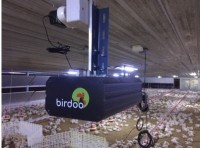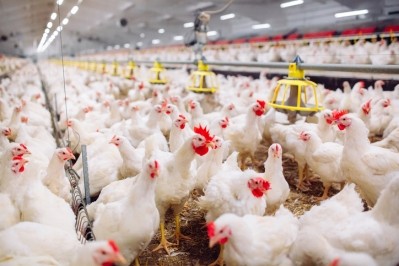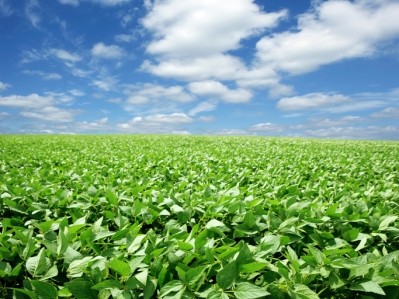Cargill leveraging AI tools to optimize broiler production

The US agribusiness giant’s animal nutrition business has been building a portfolio of artificial intelligence (AI) driven innovations through proprietary development and strategic partnerships. The tools, it said, are designed to go beyond nutrition and help customers optimize their operations with actionable insights.
Its patent-pending Galleon microbiome analysis tool enables broiler producers to decide how changes in raw materials, diet, additives, vaccine programs, and farm management practices might influence the microbiome of their flock, said the company.
Using a swab from a live bird, Cargill scientists then analyze a customer’s broiler flock health using Galleon’s database of poultry microbiome, which was developed over a decade using a global dataset and about 100 trial studies. The analysis is further augmented using statistical analysis, machine learning and AI capabilities to provide producers with a report and recommended interventions to address issues, it said.
And the results are unbiased towards a specific product, stressed Cargill.
"Galleon has been introduced to a number of customers and has started to be used on a more frequent basis. This work is being done with companies around the globe and is covering different markets, from feed producers to poultry integrators,” Henk Enting, senior technology lead for Cargill’s animal nutrition business, told FeedNavigator.
Microbiota maturation
Galleon, he said, can pinpoint reasons why different farms with the same inputs might have different performance results. In one instance, he said, the team were able to determine why broilers in some farms responded well to a higher concentration of additives in diets while those on other farms did not perform as expected.
“The difference was in the maturation of the microbiota in the broilers. An outcome of this was to focus directly on the maturation of the microbiota by changing the diet as well as adjusting management practices rather than focusing solely on the concentration of the additives.
“After the change in focus, we did see an improvement in performance, and [this development showed] the importance of focusing on maturation of the microbiota in broiler chickens.”
Galleon also helped identify another issue, which is that sudden changes in feed composition or specific raw materials could result in an increase in [the presence of] Campylobacter. “This is a significant finding and work to understand this better is underway.”
Development phase
The development of the AI tool actually began in 2009 as the hunt was on to find biomarkers to help reduce the use of antimicrobial growth promoters (AGPs), explained Enting.
“Around the same time, internally, work to develop rapid detection methods for specific bacteria strains was underway. The two workstreams were integrated and developed into the Galleon microbiota array. Over time, more biomarkers were added to improve the link between bird performance and microbiota composition.”
In terms of how broad the trial data that Galleon is based on, he said the first work was done primarily in the US and in The Netherlands, but study locations were expanded eventually to cover all continents, with the exception of Australia, and included the evaluation of different feeds, housing conditions, climate, and breeds.
And Enting said the learnings, to date, suggest that there is a clear relation between the gut microbiome and bird performance and health. “Future work could focus on ways to steer the development to improve the performance and health of the birds. Of course, this can include the development of new products as well.”
3D camera for broiler weighing
Cargill has also teamed up with digital specialist, Knex, to develop Birdoo, which is technology that leverages proprietary computer visioning and AI for hands-free, real-time flock insights with predictive modeling data.
The technology is designed to replace manual weighing with precision through 3D imaging, track broiler performance and weight variability in real-time, and reduce processing variability and save on costs through better harvest planning.
Amber McKinzie, digital category manager for poultry and nutrition for Cargill’s animal nutrition business, told us this 3D camera broiler weighing solution is the first-of-its-kind in the market.
“Cargill and Knex have entered a partnership to distribute technology that addresses real-time broiler weight performance management. Additionally, Cargill has signed an exclusive agreement to be the go-to-market provider for this technology in the Americas.”
She explained that Birdoo uses 3D cameras with machine vision to monitor the flocks. It processes those images and applies AI to transform the data into weight estimations.
“The sample size is higher with Birdoo than with manual weights or scales, and that helps improve accuracy. Users can see current bodyweights and predict growth distribution curves in real-time all the way out to harvest. In some cases, Birdoo replaces the need for manual bird weights which is safer and less stressful for the people and animals involved.”
A cloud-based platform allows farmers, technical assistants, nutritionists, production planner and management to track animal performance and anticipate issues for better resolutions and outcomes, she said.
“One of the benefits of a cloud-based system is that our customers can configure it to give users access to the current weights and growth predictions to help them be more effective in their roles. Rather than looking in the rear-view mirror, these users know what is happening with their flock performance today and what is predicted to happen in order to make better decisions on nutrition, flock management, and harvest planning,” continued McKinzie.
Feed savings
Weight prediction data helps planners harvest flocks more efficiently and sustainably by improving the feed conversion ratio and saving on feed, on average 10-30g per bird, thus reducing variability and the number of downgrades at the packing plant, added McKinzie.
“By using Birdoo to measure and predict bird bodyweight in real-time, producers know exactly the best time to harvest the birds. Good harvest planning often involves knowing when birds hit the target weight and harvesting as close to that as possible. For a producer with 1.2 million average-sized birds per week saving on feed really adds up annually. For flocks kept more days on farm, knowing when birds reach the peak of the growth curve is key to knowing when feed conversion becomes less efficient.
“For some producers, reducing variability means less downgrades at the packing plant which can lead to additional profit opportunities.”


















